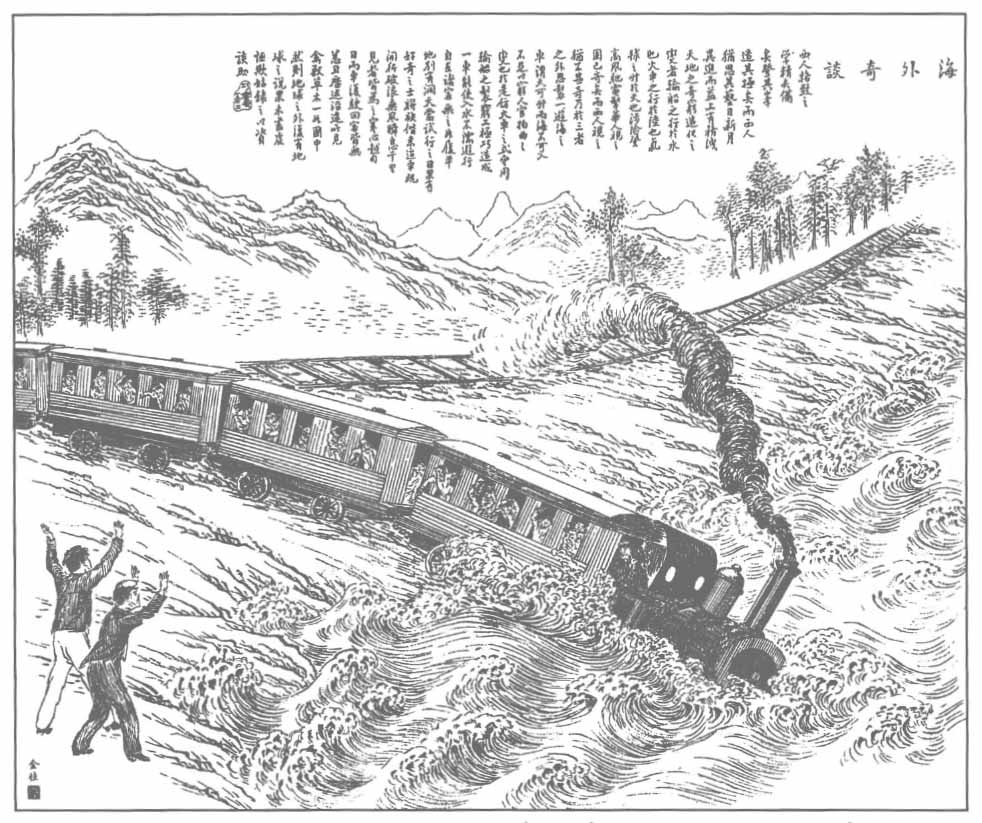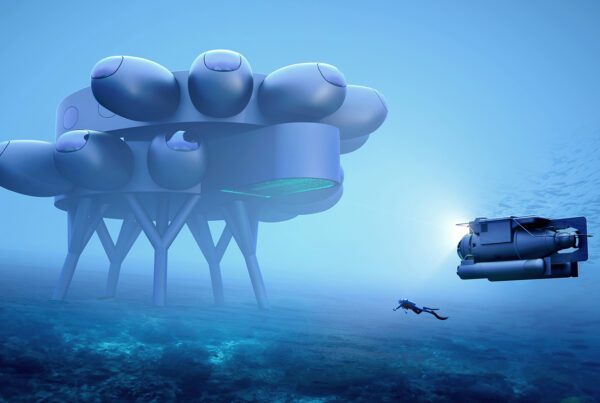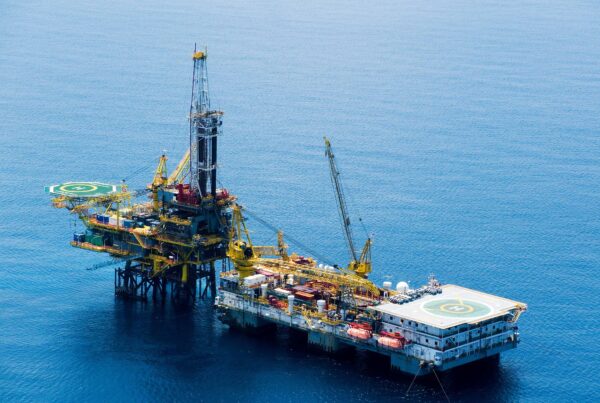Imagining Lexicons for Changing Seas

Image source: Youru Wu, Dianshi Zhai Pictorial Daketang ban (点石斋画报 大可堂版), issue 14, Shanghai: Shanghai Huabao Press, 2001, pp. 43
Published in the late 19th century, the Dianshi Zhai Pictorial provides an ideal vehicle for exploring the relationship between visual representation and the technological imagination of Qing China. It was not only one of the first pictorials in China but also the primary source of influence on cultural life at that time. The Dianshi Zhai Pictorial demonstrates the obsession with technology through the inclusion of numerous descriptions of Western technologies and artefacts. The reports and images in the pictorial helped to develop a structure of feeling that we can see China’s imagination of the oceanic imagery of Western technologies.
The graphic report entitled “Strange Tales from Abroad” was published in the sixth issue of the Dianshi Zhai Pictorial, telling the story of an oceanic train modelled on the Western train with the principle of a ship. In the narration attached to the picture, author Gui Jin vividly portrays the astonishing experience that this oceanic train brings to the daily travel of the public:
“The Westerners … have created a train that can travel in the water without getting wet. It was modelled on a train and then transformed into a ship’s mechanism. The train travels smoothly [in the sea] just like on land … On the day of the trial operation, many curious people came along to experience the ride. After setting out, the train was able to travel thousands of miles in an instant, breaking through the wind and waves. The viewers were all frightened. Ten days later, when the train returned, the guests were all safe and sound and told what they had seen and heard along the way—animals and plants [on the sea floor] are exactly as they would normally be seen in the homeland. Seemingly, the idea that there is another world beyond the present one is not necessarily a lie.” (My translation)
Drawing on James W. Carey’s insight on technology, “the best way to grasp the effects of … technology is… through the detailed investigation in a couple of sites where those effects can be most clearly observed.” (1983, p. 310) We could rethink the cultural impact of the technological imagination of the ocean in China at the turn of the century (19th to 20th centuries) and its cultural legacy. In reviewing that history, we need to recall that all technologies from the West were called “oceanic objects” (洋物件)—such as oceanic trains. The character for “ocean” (洋) originally meant “foreign ocean.” However, as the people of the time began to recognise the lofty position of the West in the global ocean and its technological advance over China, the term “ocean” (洋) gradually stood in for “modernity” and “civilisation.” As such, Chinese maritime imagery was imbued with connotations of the “Oceanic West.”
The oceanic train is just one of many exemplary cases of China’s cultural imagination in the late 19th century when the so-called East and West encountered. Exploring the technologised imaginary of the oceanic brings histories, geopolitics, and cultural life together for us to look from the past into the present.
References
Carey, J. W. (1983). Technology and ideology: The case of the Telegraph. Prospects, 8, 303–325. https://doi.org/10.1017/s0361233300003793



